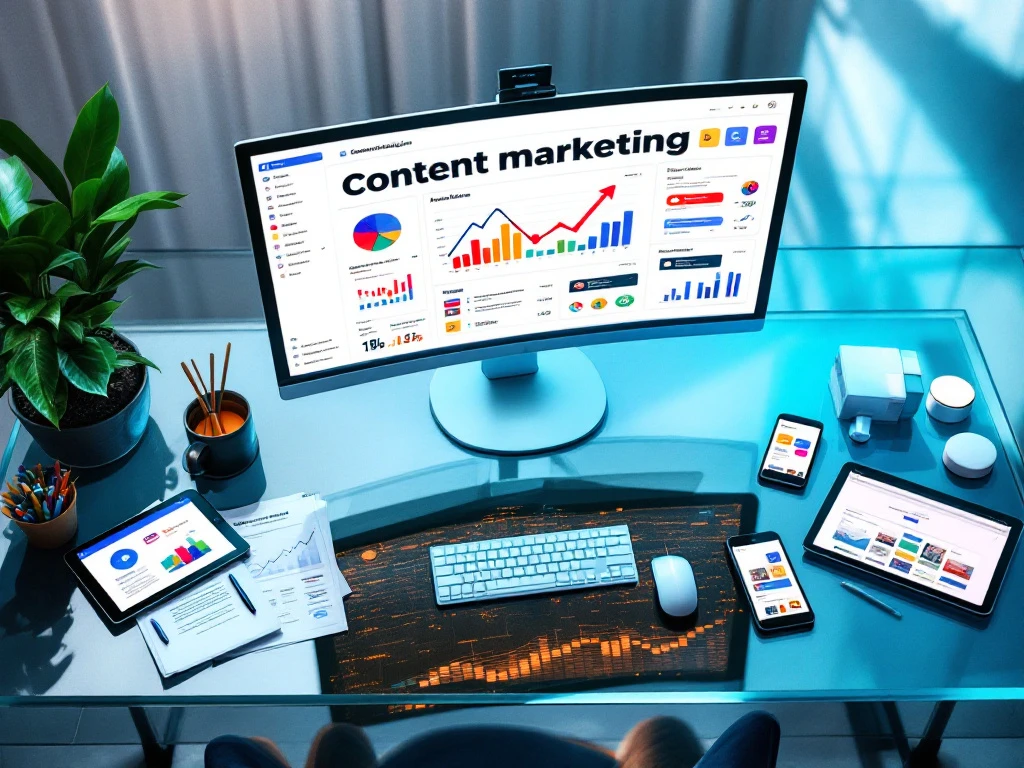When selecting a powerful content marketing platform, prioritize tools that streamline workflows, enhance team collaboration, and integrate with your existing tech stack. The ideal solution centralizes content operations while providing robust creation capabilities, analytics, and brand consistency features. Modern platforms should automate repetitive tasks, offer customizable templates, and deliver meaningful performance insights—all while maintaining an intuitive user experience that empowers both creative and marketing teams.
What is a content marketing platform?
A content marketing platform serves as a centralized hub that enables marketing teams to plan, create, manage, publish, and measure content across multiple channels. Unlike traditional content management systems that simply store and organize assets, these specialized platforms are designed to support the entire content lifecycle from ideation to distribution. By bringing together various content operations into a single ecosystem, they eliminate silos between teams and create a more streamlined approach to marketing execution.
These platforms help marketing departments overcome common challenges like disconnected workflows, inconsistent branding, and inefficient approval processes. Through integrated functionality, they enable teams to maintain visibility throughout the content journey while automating repetitive tasks that typically slow down campaign delivery.
How do content marketing platforms improve workflow efficiency?
The most valuable content marketing platforms transform fragmented processes into smooth, automated workflows. By centralizing task management, approval routing, and project timelines, these solutions significantly reduce the bottlenecks that typically delay campaign launches.
Robust workflow features typically include customizable approval paths that ensure the right stakeholders review content at the right time. Task management capabilities help assign responsibilities clearly while tracking progress across multiple projects simultaneously. Automated notifications eliminate the need for constant email follow-ups, keeping projects moving forward without manual intervention.
The best platforms provide visual workflow builders that allow teams to create standardized processes for different content types, ensuring consistency while reducing the administrative burden on creative teams. This systematic approach prevents important steps from being overlooked and helps maintain quality standards even when working at scale.
What content creation capabilities should a good platform include?
Effective content marketing platforms offer robust creation tools that balance quality with scalability. Look for solutions with dynamic templates that allow for quick adaptation across channels while maintaining brand guidelines. These template systems should be flexible enough to accommodate different content formats, from social posts to email campaigns.
Asset libraries with robust tagging and organization features help teams quickly locate and repurpose existing content, maximizing the value of creative work. The best platforms include design capabilities that enable quick edits without requiring specialized software skills, democratizing content creation across marketing teams.
Advanced platforms now incorporate content automation features that can generate variations for different audiences, channels, or regions automatically. This capability is particularly valuable for global brands needing to maintain consistency while adapting messaging for local markets.
How important are collaboration features in a content marketing platform?
Collaboration capabilities are essential for maintaining content quality and accelerating approval processes. Effective platforms provide commenting and feedback tools that keep conversations in context rather than scattered across emails. Version control features prevent confusion by clearly tracking iterations and maintaining an accessible history of changes.
Role-based permissions ensure team members access only what they need, protecting brand assets while enabling appropriate stakeholders to contribute. The ability for multiple team members to work simultaneously on projects dramatically reduces bottlenecks and speeds time-to-market.
Real-time collaboration allows teams to gather feedback quickly, make decisions faster, and implement changes more efficiently. This is particularly valuable for global teams working across different time zones or when tight deadlines require accelerated review cycles.
What analytics and reporting capabilities should you prioritize?
Analytics features transform content marketing from guesswork into a data-driven discipline. Effective platforms provide performance metrics that track how content performs across channels, enabling teams to identify what resonates with audiences. Campaign dashboards should offer both high-level overviews and the ability to drill down into specific metrics.
Look for platforms that provide audience insights by tracking engagement patterns, helping teams understand which topics and formats drive the most interaction. Content effectiveness measurements should correlate marketing activities with business outcomes, making it easier to demonstrate ROI.
Customizable reporting allows teams to focus on the metrics most relevant to their specific goals and stakeholders. The ability to track content performance throughout its lifecycle helps identify optimization opportunities and inform future content strategy decisions.
How does integration with other marketing tools affect platform value?
Integration capabilities determine how effectively a content marketing platform fits within your existing technology stack. The most valuable platforms connect seamlessly with CRM systems to align content with customer data and improve targeting. Email platform integrations streamline campaign execution by eliminating manual content transfers.
Social media tool connections enable direct publishing to multiple channels without requiring platform-specific formatting. DAM integrations ensure assets remain consistent across systems while maintaining proper version control.
A well-integrated platform creates an end-to-end visibility across the content lifecycle, from creation through distribution to performance measurement. This connected approach eliminates data silos and provides more accurate insights into content effectiveness, helping teams make better strategic decisions.
Content marketing platform features: Key takeaways
When evaluating content marketing platforms, focus on solutions that provide comprehensive workflow management, scalable content creation tools, robust collaboration features, actionable analytics, and seamless integrations. The right platform should reduce manual work while improving content quality and consistency.
At Storyteq, we’ve developed our Content Marketing Platform to address these critical needs. Our solution centralizes planning, creation, and activation of content to help global brands acquire customers more efficiently and effectively. By streamlining processes from ideation to distribution, we help teams reduce production time while maintaining brand consistency across markets and channels.
Ready to transform your content marketing operations? Request a demo today to see how our platform can help your team create, manage, and activate content that drives measurable results.
